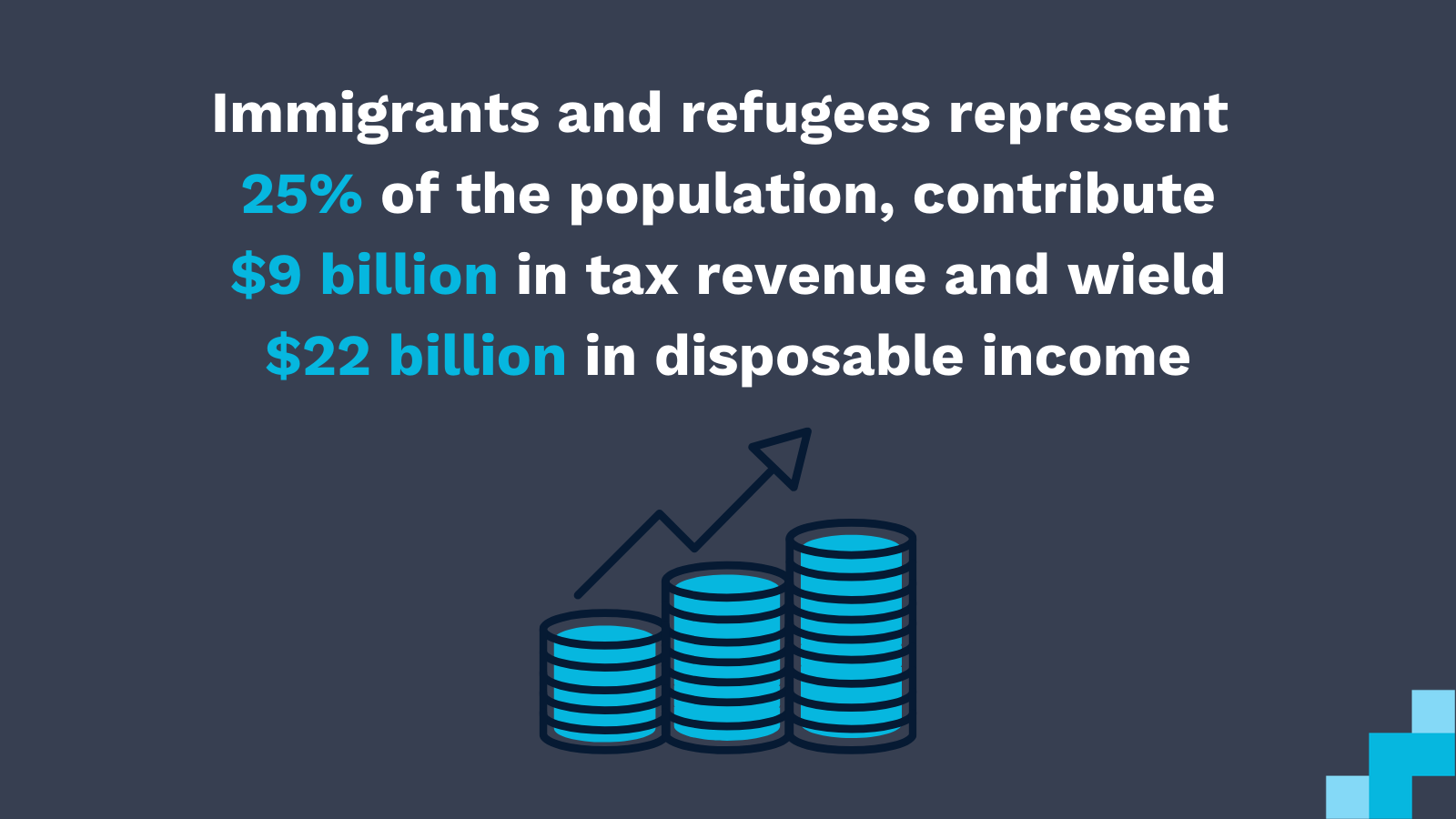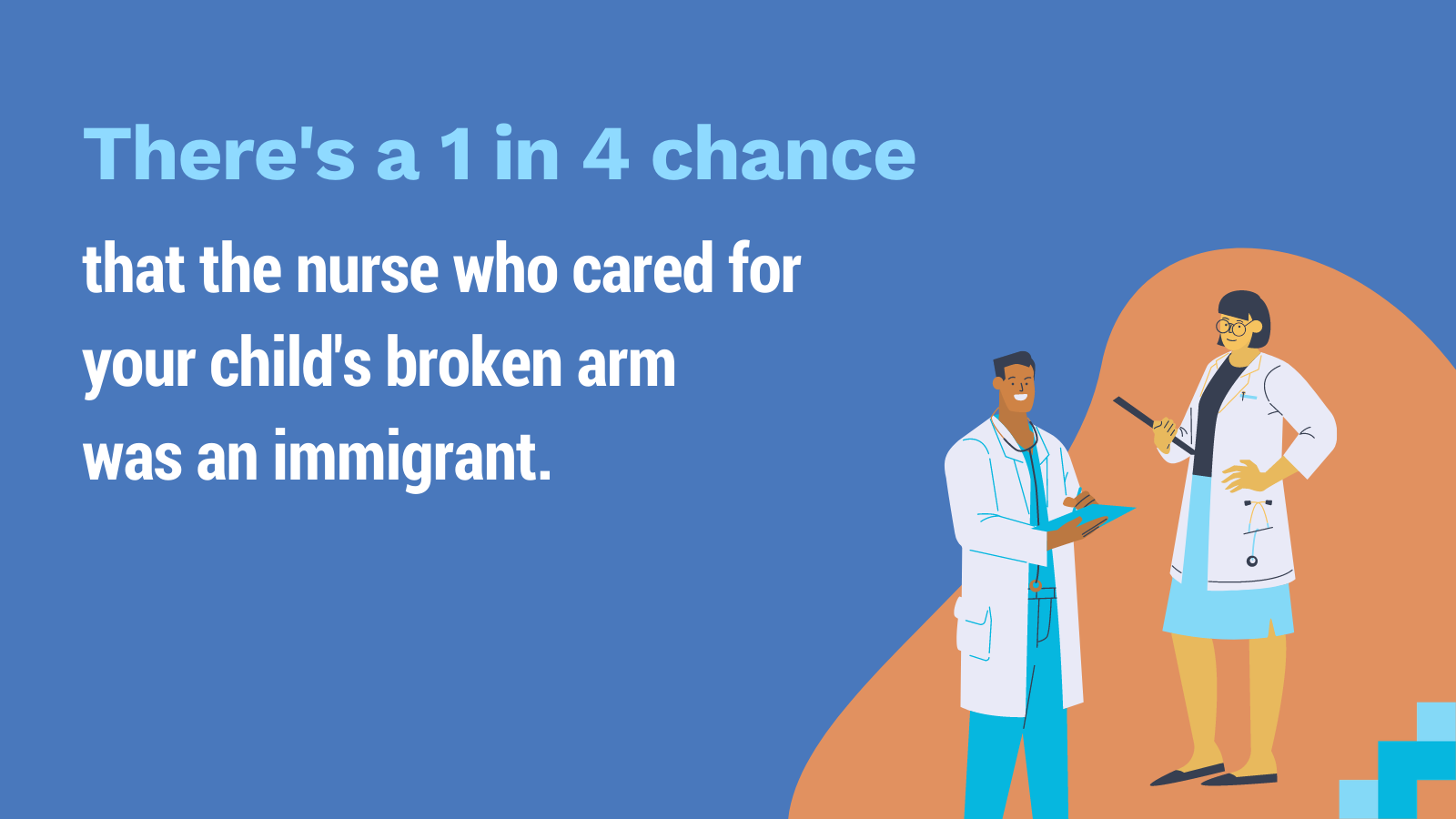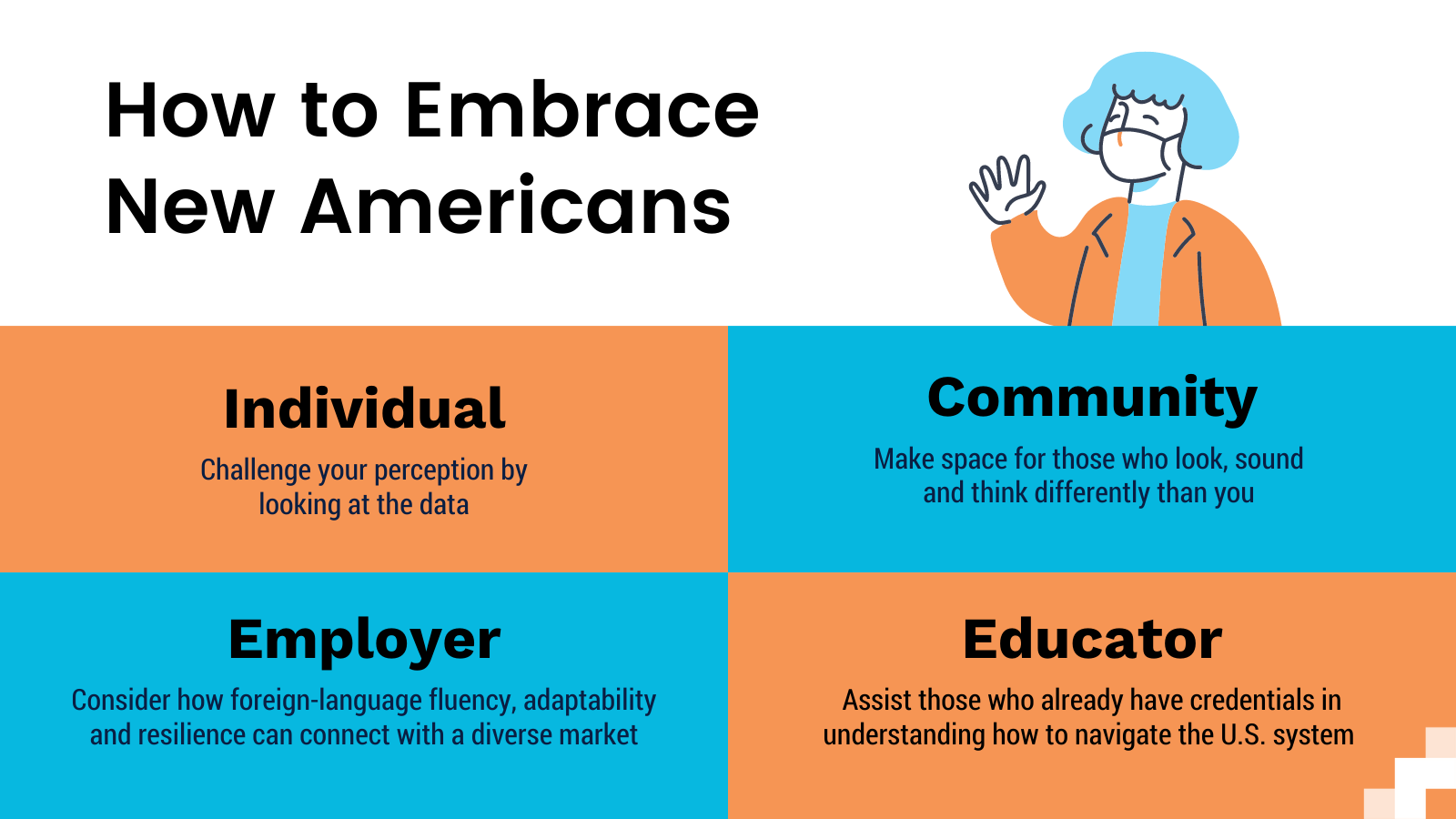By Brooke Valle, Chief Strategy and Innovation Officer; Research by Daniel Enemark, , Ph.D., Senior Economist @danielenemark
Except where noted otherwise, data comes from the 2018 American Community Survey, the most recent Census data available as of the time of this publication.
To address inequity, we must be willing to ask hard questions, make unpopular decisions and stand for what is right. Diversity is one of San Diego’s greatest strengths, yet people of color face dramatic inequities in our local education, employment, healthcare, banking and justice systems. Immigrants and English learners—over a quarter of San Diegans—face inequities tied to legal status, language fluency, skin color and religion.[1] If our economy is to thrive, this cannot stand.
I am a white, college educated woman from small town Ohio, but this work is personal for me—personal because my husband is a new American whose life has been more difficult than mine simply because his skin color is brown, first language is Spanish and birthplace is El Salvador. More broadly, this is personal to me because I believe treating people the way I want to be treated is simply the right thing to do.
Immigration–Not Just a Moral Imperative but a Driving Factor of Our Economy
Economists have long known that immigration creates large net benefits in the financial wellbeing of U.S.-born Americans—increasing employment, productivity, wages and business growth.[2] Despite rhetoric to the contrary, immigrants help grow our economy. In San Diego, immigrants and refugees represent 25% of the population, contribute $9 billion in tax revenue and wield $22 billion in disposable income. This should be personal to all of us because that’s one fourth of our neighbors, of the attendees at our place of worship, of our children’s classmates—and a fourth of our customers and spending power!
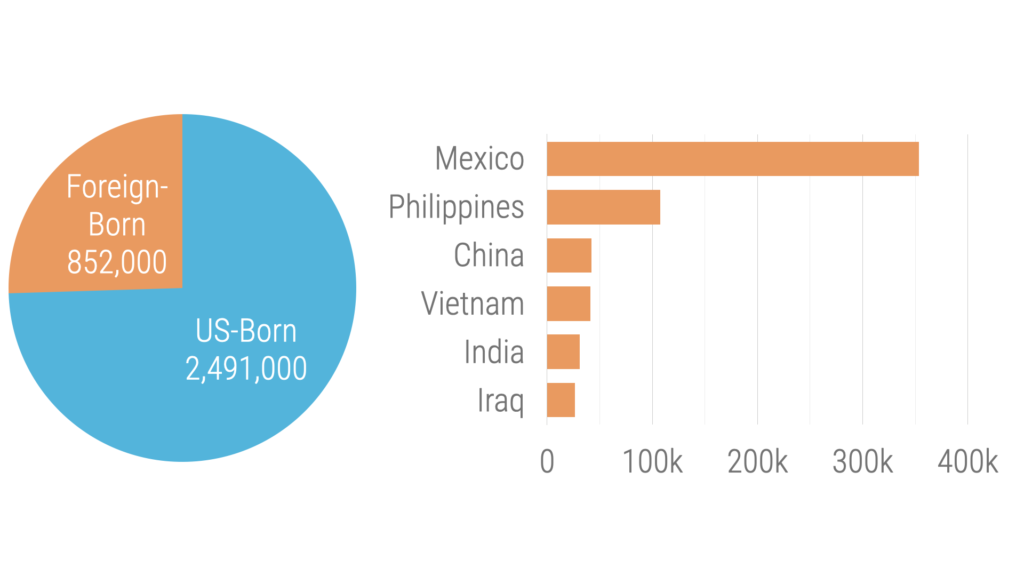
The immigrant populations in our community are diverse, with two thirds from from Mexico, the Philippines, China, Vietnam and India. In fact, from 2013–2018, 23% of our population growth is attributable to immigration. San Diego is also one of the nation’s leading destinations for refugee resettlement. 18,000 refugees have arrived since 2002, two-thirds of them from Iraq, Somalia, Burma, Democratic Republic of Congo, and Syria.
Immigration is a Pillar of Strength for San Diego’s Workforce
In addition to the economic benefits, immigrants bring tremendous social benefits to the communities in which they live. Criminologists consistently find that immigrants commit fewer crimes, and that immigration reduces overall crime rates.[3] In San Diego, neighborhoods that have experienced an influx of immigrants have seen violent crime rates drop.[4]
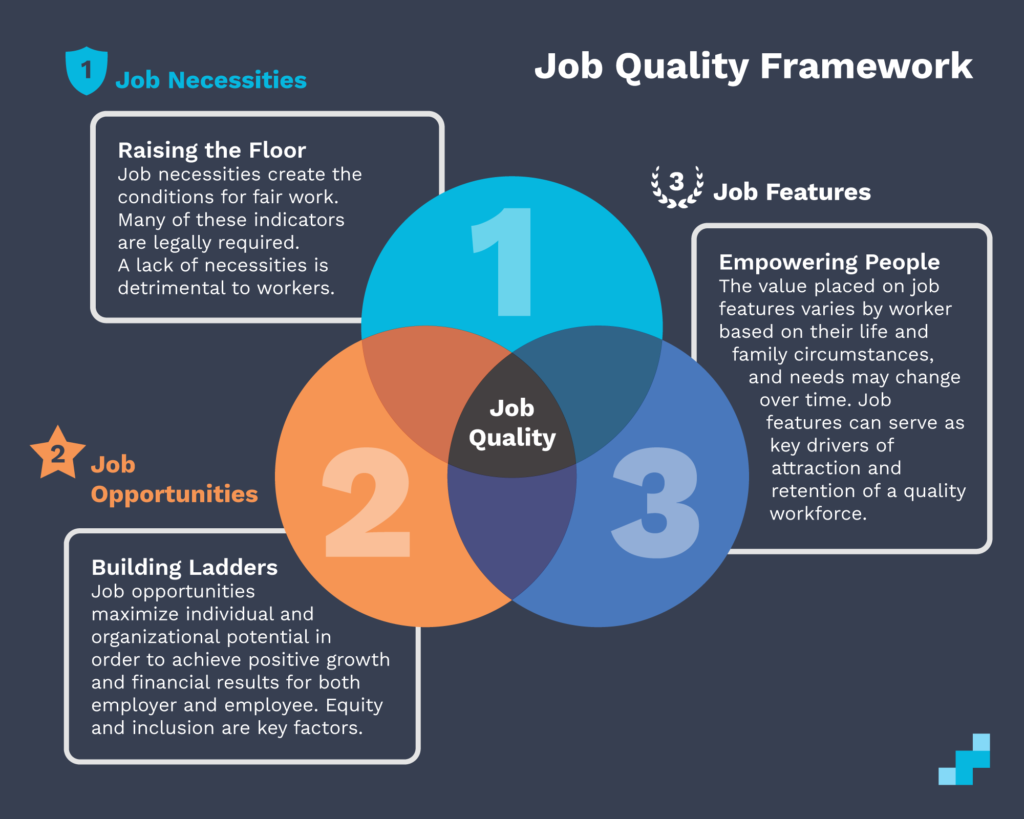
Immigrants and refugees are often thought of as invisible, yet immigrants account for 30% of working age adults in San Diego. New Americans often arrive in the U.S. highly educated and skilled with 31% of immigrants in San Diego having a bachelor’s degree or above. However, many high-skilled immigrants find themselves in poor quality jobs, which places a great strain on immigrant families and often requires newcomers to leverage social services despite their years of knowledge and experience.
During focus groups with newcomers conducted in early 2020, participants shared that the primary challenges faced in obtaining family sustaining jobs were lack of U.S. experience, delays in conversion of credentials from their home country due to cost and/or lengthy timelines, limited English language fluency and employer hiring practices. Nationwide, college-educated immigrants employed in low-skilled work miss out on more than $39 billion in wages. And as a result, federal, state and local governments lose out on more than $10 billion in unrealized tax.[5]
Immigrants who can enter the labor market play critical roles in support industries such as food delivery and supermarkets, which puts them at higher risk of exposure to the COVID-19 virus. They work on the front lines from health care to manufacturing and the service sector. For example, data from the latest ACS survey shows that immigrants account for 51% of all workers in skilled nursing facilities, 46% of pharmaceutical and medicine workers, 39% of medical equipment and supplies, 32% of childcare workers and 56% of crop production.
In fact, you may be surprised to know that in almost every one of the largest 15 metro areas, immigrants make up at least 20% of nurses, physicians, and surgeons. And in California, the country’s top agricultural state, immigrants make up almost two-thirds of the agricultural workforce.[6] Said another way, there is a 1 in 4 chance that the nurse who cared for your child’s broken arm was an immigrant, and a nearly 1 out of 2 chance that your child’s elementary or middle school teacher, the elder care worker taking care of your mom, the individual who harvested the ingredients for your salad or the stylist who gave you the hairdo you love is an immigrant.
How Can We Embrace Our Region’s Growing Diversity?
Our economy would not be what it is today without the tireless labor of our immigrant populations. Let’s listen, learn and act differently:
- As an individual, challenge your perceptions of who immigrants are and the role they play in the community by looking at the data. Be willing to shift long-held beliefs as you learn more about the impact of immigrants and refugees in many occupations.
- As a community member, use your privilege and power to make space at the table—from the boardroom to the classroom—for those who look, sound or think differently from you. Speak up when practices exclude and/or hurt others.
- As an employer, shift your hiring practices to focus on competencies that take into consideration knowledge gained in the classroom, on the job or in life. Consider how foreign-language fluency, cultural aptitude, adaptability and resilience—strong traits for many immigrant populations—can help you better connect with San Diego’s diverse market. Build pathways for immigrant workers from entry-level jobs and provide opportunities for contextualized English-language learning when needed.
- As a practitioner, think creatively about braiding existing programs to ensure immigrants do not lack necessary wraparound services ranging from test application costs, transcript evaluation, books, materials, paid work experience or living expenses. Provide information on existing career pathway and credential conversion opportunities in conjunction with relevant labor market information to allow job seekers to make key career decisions. For new American job seekers to pursue economic mobility they must understand what job quality means to them, including what a living wage is for the area of the country where they will reside with their family.
- As an educator, work with your institution and certifying authorities to create flexible course structures for the individual credits needed to fill gaps identified during the credential evaluation process. This will enable immigrants to quickly complete missing coursework so they can return to the labor market in roles that leverage knowledge and experience from their home country.
In a dynamic American economy where more than 70% of jobs require some type of post-secondary credential, it is critical not only to help new American workers strengthen their English skills and earn industry-recognized credentials, but to assist those who already have credentials in understanding how to navigate the U.S. system. Helping immigrants find work commensurate with their abilities will set immigrant families on a path to economic mobility through quality jobs. - As a funder, ensure grant outcomes do not incentivize the rapid placement of immigrants in any job, regardless of match, but rather invest in longer-term outcomes such as job quality, which includes considerations for leveraging a person’s knowledge, skills and abilities. Consider flexible funding structures to support not only vocational English language skill acquisition, digital literacy and access as well as on-the-job training opportunities for new Americans at all stages of their careers, but also to establish dedicated navigational support to come alongside of participants.
The need is great and the opportunity to rebuild equitably is upon us, let’s not squander it.
Immigrants, refugees, and asylum seekers:
There are three types of New Americans: immigrants, refugees, and asylees.
- Immigrants choose to leave their homes and move to a foreign country with the intention of settling there.
- Refugees are forced to flee their homes—often suddenly—due to persecution based on race, religion, nationality, or politics. A refugee moves from their home to a second country (e.g. from Burma to Thailand) where they may live in a refugee camp or integrated into a local city. Most refugees seek to return home as soon as they can safely do so. Less than 1% of refugees are resettled to a third country. Resettling to the U.S. requires a rigorous, two-year vetting process. Refugees arrive in America with legal status that guarantees the right to work and some short-term assistance.
- Asylum seekers are also fleeing their homes but their claim to refugee status is not determined prior to their arrival. Crossing an international border for asylum is not illegal—U.S. and international law guarantee asylum seekers a right to be heard. Asylum seekers must arrive at a port of entry to apply for asylee status; they cannot request entry ahead of time. In the U.S., asylum seekers are typically fleeing extreme danger in Central America, often due to political unrest that U.S. foreign policy may have had a hand in creating.
A fourth category, migrants, are those who cross domestic or international borders to pursue economic opportunity ranging from seasonal farm work to high-tech consulting gigs. Foreign migrants who settle in the U.S. become immigrants and thus new Americans, but many receive a temporary work visa and return home at the completion of a job.
[2] National Research Council, & Committee on Population. (1997). The new Americans: Economic, demographic, and fiscal effects of immigration. National Academies Press.
Pandey, M., & Chaudhuri, A. R. (2017). Immigration-induced effects of changes in size and skill distribution of the labor force on wages in the US. Journal of Macroeconomics, 52, 118-134.
Orrenius, P. M., Zavodny, M., & Abraham, A. (2020). The Effect of Immigration on Business Dynamics and Employment. Working Paper no. 2004, Federal Reserve Bank of Dallas.
[3] Ousey, G. C., & Kubrin, C. E. (2018). Immigration and crime: Assessing a contentious issue. Annual Review of Criminology, 1, 63-84.
[4] Martinez Jr, R., Stowell, J. I., & Lee, M. T. (2010). Immigration and crime in an era of transformation: A longitudinal analysis of homicides in San Diego neighborhoods, 1980–2000. Criminology, 48(3), 797-829.
[6] https://research.newamericaneconomy.org/report/immigration-and-covid-19/

